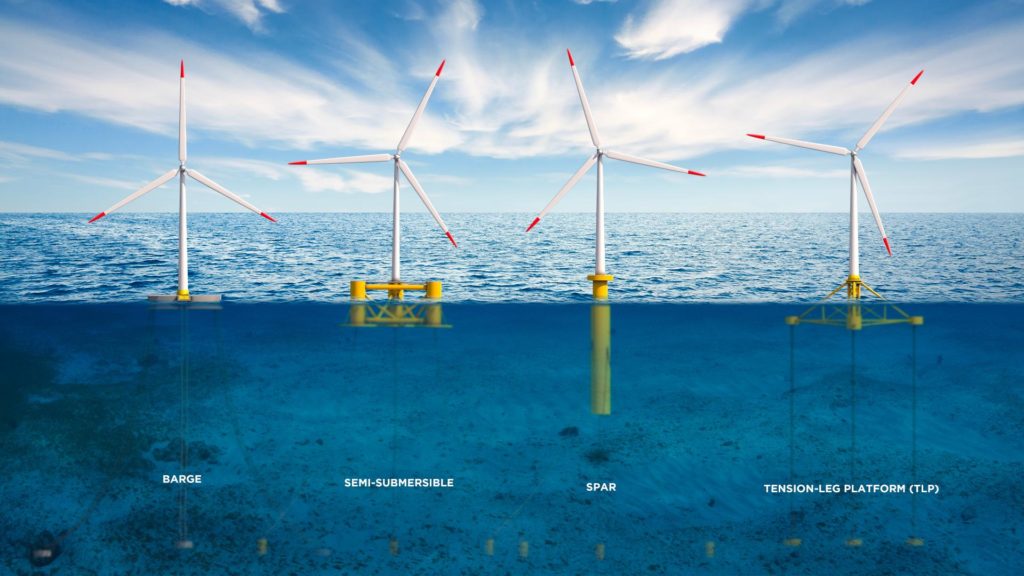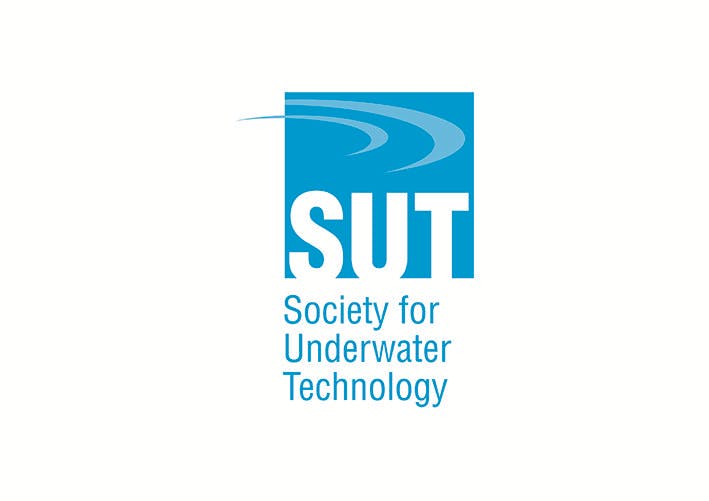South West – Offshore Floating Wind – Design and Installation – REGISTRATIONS NOW CLOSED
The Met Office, FitzRoy Road, Exeter EX1 3PB
14 June, 2018

Credit: Green Giraffe https://green-giraffe.eu/
“Seizing the opportunity of floating wind”
Speaker: Alex Louden ORE Catapult
This high-level look at the floating offshore wind industry will consider what has been achieved to date, and provide a brief overview of the key commercial risks facing the industry in different markets. This will include presenting some of the findings of the EU H2020 project “Lifes 50+” which aims to facilitate offshore wind in water depths greater than 50m, in part, by developing a methodology for evaluating and qualifying the commercial and technical risks associated with floating wind.

Alex Louden joined ORE Catapult in September 2017 having completed his MSc in Renewable Energy and Environmental Modelling. This built upon Alex’s background in Environmental Science giving him a holistic understanding of renewable energy technologies and the wider energy transition.
Alex’s role as Innovation manager sees him building relationships with a number of stakeholder types such as SMEs and academic partners. Through attending events, conferences, and developing strategies for engaging with stakeholders he is involved in building collaborative projects to contribute to de-risking technology and reducing costs in the offshore renewable energy industry.
“Scaling factor in floating wind structures: is bigger better?”
Speaker: Peter Kingsland, Principal Consultant
Peter joined Longitude in 2010 w orking as a Naval Architect and structural engineer based in Exeter. Prior to this Peter worked in a UK ship yard as a Naval Architect for steel ship design and construction within the commercial, private and militarily sectors. Since joining Longitude Peter has performed a large variety of analyses including hydrostatic, hydrodynamic, cable lay, stability, mooring and structural scopes. Peter has been responsible for developing Longitude UK’s offering of Site Specific analyses working closely with geotechnical engineers to provide cohesive reports on jackup/seabed interaction and foundation capacities. Peter is a subject matter expert for several design and analysis packages include MOSES, OrcaFlex, FEMAP, SACS and STAAD Pro and is currently the Principal Naval Architect at Longitude Exeter with responsibility for the technical output of the Naval Architecture department.
orking as a Naval Architect and structural engineer based in Exeter. Prior to this Peter worked in a UK ship yard as a Naval Architect for steel ship design and construction within the commercial, private and militarily sectors. Since joining Longitude Peter has performed a large variety of analyses including hydrostatic, hydrodynamic, cable lay, stability, mooring and structural scopes. Peter has been responsible for developing Longitude UK’s offering of Site Specific analyses working closely with geotechnical engineers to provide cohesive reports on jackup/seabed interaction and foundation capacities. Peter is a subject matter expert for several design and analysis packages include MOSES, OrcaFlex, FEMAP, SACS and STAAD Pro and is currently the Principal Naval Architect at Longitude Exeter with responsibility for the technical output of the Naval Architecture department.
A brief overview of the key considerations for scaling offshore floating wind devices primarily considering the pay off between electrical yield and the complexity/ cost of construction, transportation and instillation of ever larger floating substructures and their moorings.
“Subsea cable installation: the differences between fixed and floating wind”
Speaker: Roberto Longo, Senior Consultant

Roberto has been working in the offshore industry for more than 8 years. In the last four years he has been working for Longitude Consulting Engineers, specialising in cable installation study and working on several Offshore Wind Farm projects and he is currently leading the cable installation team. He studied Naval Architecture at the University of Genoa (Italy).
After his studies he spent 1 year working as research assistant at the Department of Civil, Environmental and Architectural Engineering (DICAT, University of Genoa) working on the development of numerical codes for the statistical analysis of extreme load of wind exposed structures. He then worked for 4 years as
Naval Architect at the Registro Italiano Naval (RINA, Italian Naval Register) focusing in the design and verification of offshore floating structure.
The presentation will provide an overview of the subsea cable installation operations and of the dynamic analysis that need to be carried as part of the installation procedure preparation. Main differences between fixed and offshore floating wind turbine operations will be discussed.
“A Method for Cost and Risk Reduction in offshore Wind Cable Installation”
Speaker: Dr Rachel Nicholls-Lee MEng CEng MRINA CMarEng MIMarEST MWES
Rachel is the founder and director of Whiskerstay, a company offering naval architecture and marine engineering consultancy.
 She is a Chartered Engineer with extensive experience in the marine renewable energy and yacht design sectors. As a result, she is an author of over 40 publications in both international conferences and journals covering aspects of composite technology, offshore renewables and novel vessel design. Having performed several years of research into the field of composites in the marine industry, she is highly qualified in the use of such materials for innovative applications from morphing blades through to composite foundations for subsea structures and lightweight vessels. She has considerable experience in project management, design and development of marine vessels and structures; not least superyachts, tidal turbines, wave energy devices, subsea cable stability and platforms for operation in extreme environments.
She is a Chartered Engineer with extensive experience in the marine renewable energy and yacht design sectors. As a result, she is an author of over 40 publications in both international conferences and journals covering aspects of composite technology, offshore renewables and novel vessel design. Having performed several years of research into the field of composites in the marine industry, she is highly qualified in the use of such materials for innovative applications from morphing blades through to composite foundations for subsea structures and lightweight vessels. She has considerable experience in project management, design and development of marine vessels and structures; not least superyachts, tidal turbines, wave energy devices, subsea cable stability and platforms for operation in extreme environments.
“Managing Operational Risk for Subsea Power Cables with Dynamic Sections for Floating Offshore Wind Projects”
Speakers: Tony Zymelka and Maria Calle Martinez (BPP)
The presentation  will introduce the basic design differences between subsea static cables and dynamic power cables necessary for floating energy devices. It will compare the various mooring options that should be considered when designing the installation methodology for the dynamic cables. These being to ensure that the cables do not have their critical cable handling parameters compromised during installation or operation. Operational risk will be discussed. This being particularly with respect to the commercial procurement models that are used in the renewable energy sector. Risk profiles will be postulated together with ways to ameliorate them so as to ensure that project risks and costs are according to ALARP (As Low As Reasonably Practicable)
will introduce the basic design differences between subsea static cables and dynamic power cables necessary for floating energy devices. It will compare the various mooring options that should be considered when designing the installation methodology for the dynamic cables. These being to ensure that the cables do not have their critical cable handling parameters compromised during installation or operation. Operational risk will be discussed. This being particularly with respect to the commercial procurement models that are used in the renewable energy sector. Risk profiles will be postulated together with ways to ameliorate them so as to ensure that project risks and costs are according to ALARP (As Low As Reasonably Practicable)
Maria is a staff engineer with BPP experienced in the energy, marine, and insurance sectors. Her background includes a Master’s degree in Electronics and Automation Engineering. She has significant experience in the design and testing of marine powercables, project management and commissioning, as well as risk and surveys of assets – often in remote locations. This expertise is more frequently being applied by her to marine renewable projects (principally offshore wind). Her experience with forensic analysis is typically applied to providing improvements in future designs – as well as in support in legal disputesprinciples.
“Dynamic Mooring Systems for Floating Offshore Wind: Overview, Load Modelling & Testing”
Speaker: Dr Philipp Thies
The mooring system for a floating offshore wind turbine ensures that the platform stays within pre-defined station keeping limits during operation, while it provides sufficient restraining forces in storm events to guarantee survival. This presents a challenge during the design process, since the cost of the mooring system is proportional to the peak loads, i.e. those that occur infrequently in extreme conditions. Mooring designs are governed by extreme and fatigue loads which determine the required Minimum Breaking Load (MBL) of the system. If uncertainties in the environmental loading or hydrodynamic coupled response are present, additional safety factors are required.
This presentation will give an overview of innovative mooring components that aim to reduce peak and fatigue loads through non-linear line stiffness characteristic that cannot be achieved with conventional designs. The potential benefits will be shown through coupled numerical simulations of Floating Offshore Wind platform dynamics and mooring loads. The mooring properties that have been validated by physical component tests for several prototypes will also be presented.
Dr Philipp R. Thies is a Senior Lecturer in Renewable Energy in the College of Engineering, Mathematics and Physical Sciences (CEMPS) at the University of Exe ter. He holds a Dipl.-Wi.-Ing. degree in Energy- and Environmental Energy from the University of Flensburg (Germany) and a PhD in Renewable Energy from the University of Exeter (UK).
ter. He holds a Dipl.-Wi.-Ing. degree in Energy- and Environmental Energy from the University of Flensburg (Germany) and a PhD in Renewable Energy from the University of Exeter (UK).
His research interest lies in the reliability engineering of renewable energy technologies with a focus on offshore energy. He has developed novel component reliability testing approaches, Bayesian statistical analysis approaches for situations of data uncertainty and has been deeply involved in several national and international research and industry-led projects seeking to technology demonstration in the field and at large-scale in the lab. His work has aligned computational modelling with application driven design improvements and extensive planning, execution and evaluation of component reliability and testing campaigns.
“Understanding site-specific wind conditions during marine heavy lift operations with state-of-the-art weather forecasts and lidar anemometry”.
Speaker: Mr Leo Hume-Wright, Wind Energy Specialist with Met Office Energy Science team.
In June 2017 the Met Office provided weather forecast services to Saipem UK Ltd during the operation of the Saipem 7000 crane ship as it conducted mating operations for Equinor (formerly Statoil) and Masdar’s Hywind floating wind farm project in Stord, Norway. As well as an on-board meteorologist and standard products including Tab&Graph, SafeVoyage, SafeSee, etc, the Met Office provided a site-specific long-term summertime wind climatology and verified probabilistic wind forecasts at height that had been bias-corrected against the observations of a quayside remote sensing lidar anemometer. This talk will describe the work completed to provide these, the forecast correction and verification results that assisted in the setting of wind alpha factors, some features of the directional measured wind profiles, and the forecast intervention services provided by the on-board Met Office meteorologist.
This is a free event however pre-registration is essential.
Exeter is a great location for travel, only 2 hours by fast direct trains from Paddington (it’s closer but a bit slower from Falmouth and very picturesque!). There are also daily FlyBe flights from London City and Southend. It is also only 90 miles from Bristol or Truro via the M5 or A30 and 110 miles from Southampton via the A35 or A303, if you prefer. The Premier Inn and Holiday Inn Express hotels are just around the corner from the Met Office, if you want to stay over
Parking is available.

